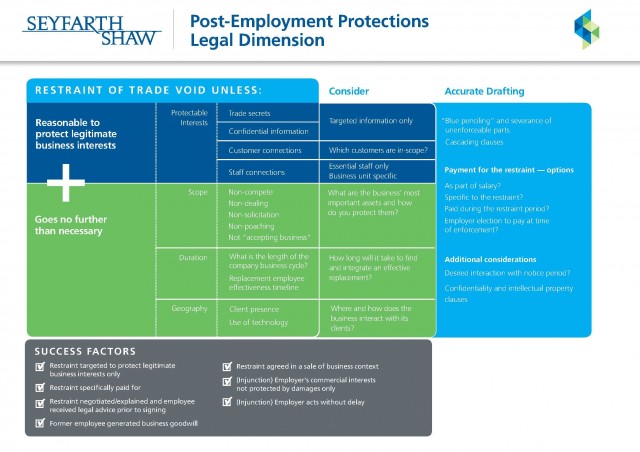 When a key employee subject to an employment restraint leaves a business to join a competitor, fast decisions need to be made to protect client goodwill or guard against misuse of confidential information.
When a key employee subject to an employment restraint leaves a business to join a competitor, fast decisions need to be made to protect client goodwill or guard against misuse of confidential information.
The more leverage an employer has against the former employee and his or her new employer, the better the prospects of negotiating a sensible solution quickly or, failing that, taking successful legal action.
Set out below is a summary of the key legal touch points:
Proving loss
One issue that looms large in these situations, particularly where the decision taken is to start legal action, is proving that the business has suffered financial loss. Often, there are no immediate financial losses in the wake of the employee’s departure. It may be some time before conduct in breach of the restraint hits the business’ bottom line. The easier it is to prove loss, the more confident will be the decision to proceed with a damages case.
Some employers try to side step this difficulty by including a “liquidated damages” clause in the restraint provision. Such a clause specifies up front the financial damage that will be caused to the employer if the restraint is breached. For example, in the accounting profession, it is not uncommon to see liquidated damages provisions which describe likely losses as two, three or even four times annual revenue, for a particular client if that client was to move their business because of breach of the employment restraint.
In theory, it is easier to prove loss where a liquidated damages provision is included in the contract because the former employee and the employer have agreed up front what the damage will be if the restraint is breached. It also provides a clear starting point for negotiations if the dispute takes that path.
But in practice, there’s more to it than that:
- Liquidated damages provisions can be attacked on the basis that they are a penalty under law and unenforceable.
- Courts may be reluctant to give the employer an injunction to stop an actual or threatened breach of the restraint if it appears that damages will be an adequate remedy. Liquidated damages provisions arguably suggest that damages will be adequate (and more easily assessed) if in fact the former employee has breached their employment restraint.
Is it worth including a liquidated damages provision in an employment restraint?
A lot turns on what is accepted practice in the particular industry and which assets of the business are being protected (our restraint map below shows the key protectable interests). If a liquidated damages provision is to be included in the contract, it is important to draft the provision carefully so that it is (a) enforceable and (b) doesn’t cut down the other options available to an employer (such as a court-ordered injunction to stop the breach).
This will ensure that the leverage the business needs is there when it is needed most.

